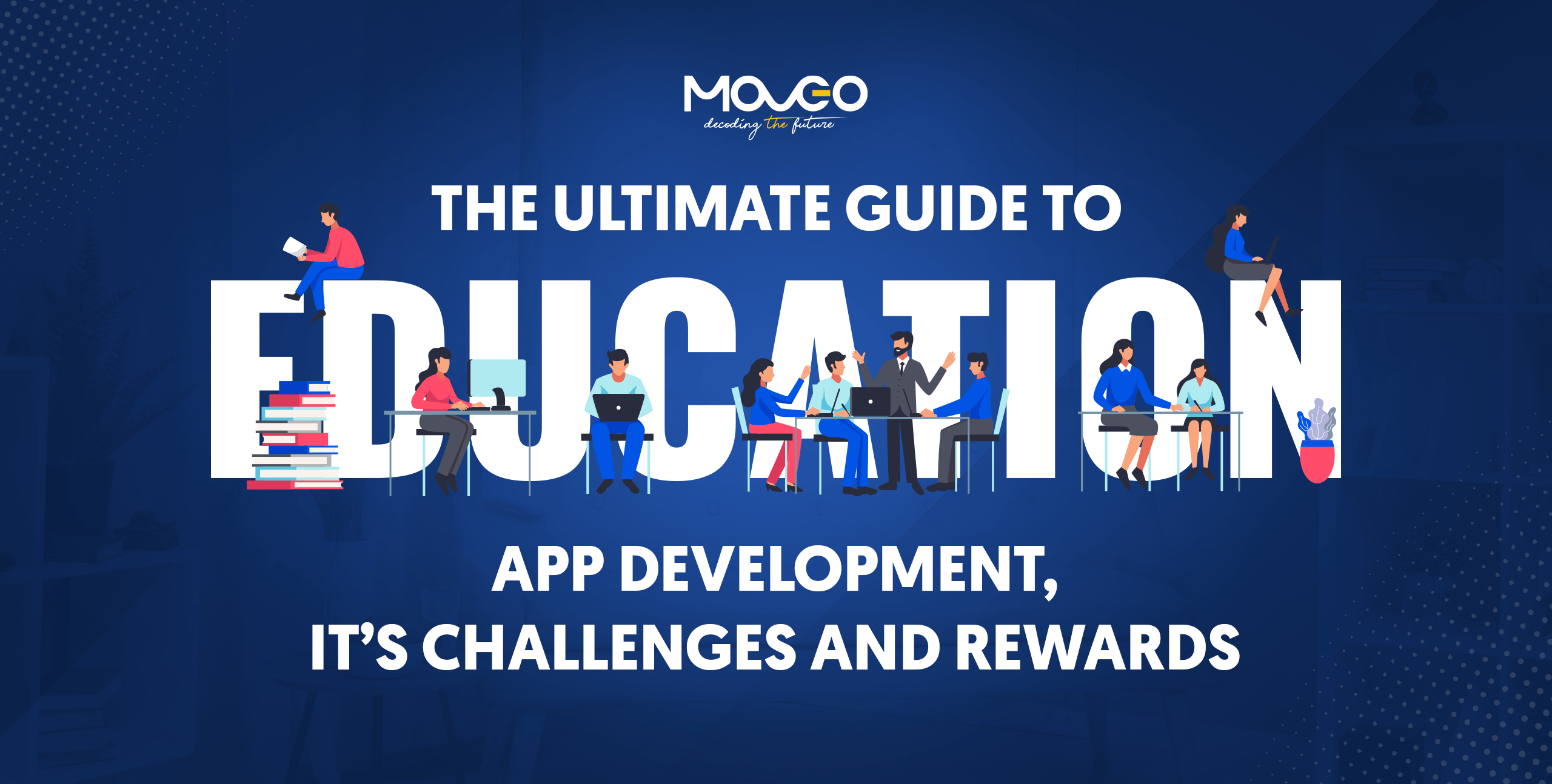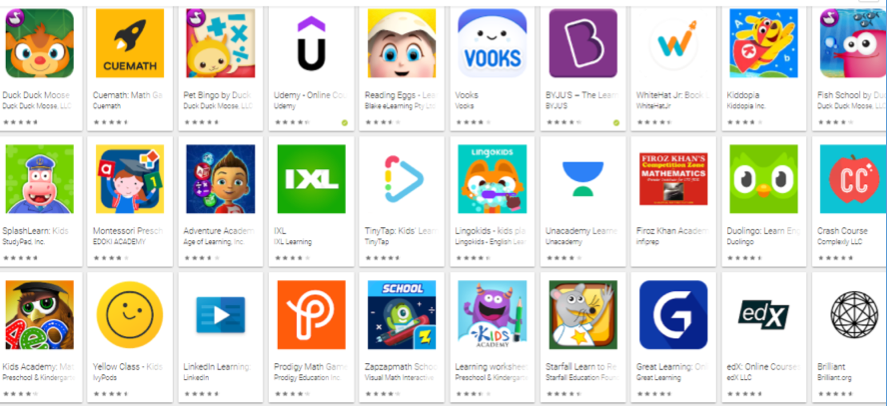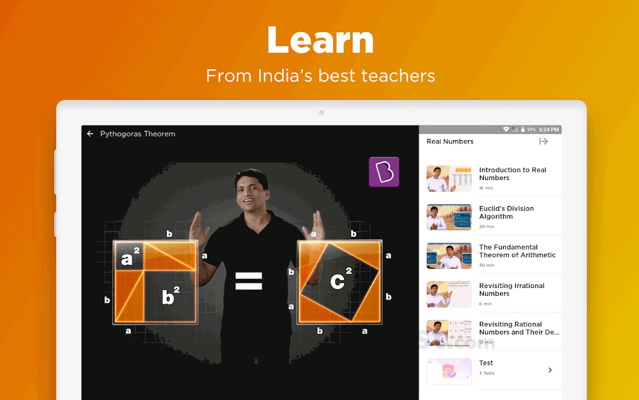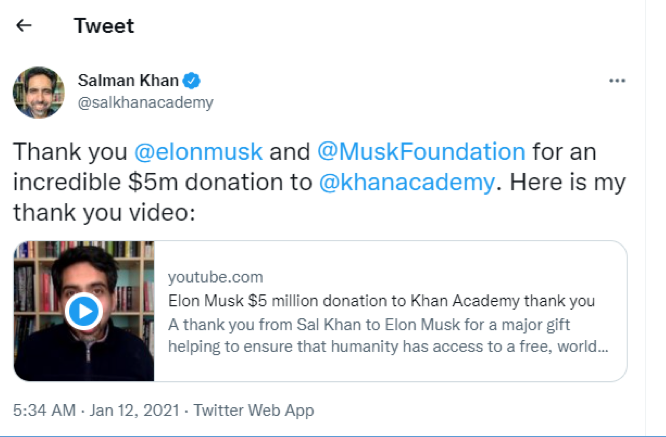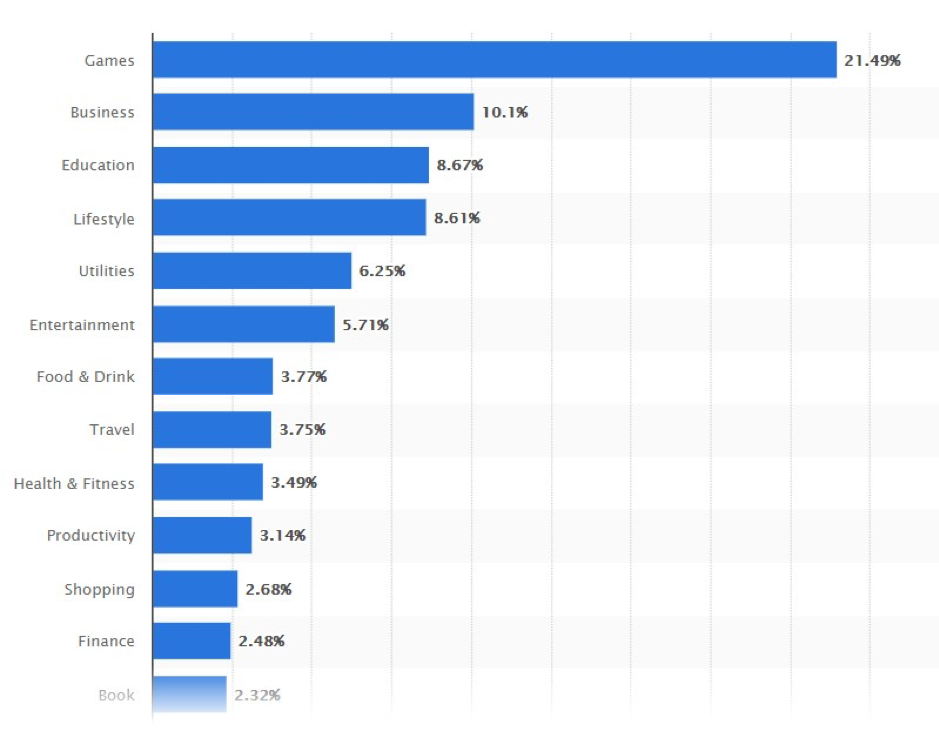The education app market is projected to reach $350 billion by 2050. Global e-learning market crossed $250 billion in 2020, driven by apps, AI, ML, AR, VR and cloud-based services. (Global Market Insights)
Education apps skyrocketed in popularity during the pandemic. Now with schools reopening and life getting back to normal, do you think their popularity is coming down? No way! Education apps are here to stay popular, profitable, and immensely helpful forever and after that.
The thing is, e-learning industry has been in the works for a really long time now, as long as we’ve had computers. The pandemic and ensuing lockdowns only acted as a very powerful catalyst in the equation, speeding up the process of education app development and deployment because it was the need of the hour. And now that students, teachers, and everyone else has seen the benefits of education apps, there’s just no going back. Education apps will continue to support students and teachers in and out of schools.
Which is why education app development is going to be a growth industry for the rest of the future and developers who understand their audience, and can help make education more accessible and fun, stand to win big.
Education apps are making more money than ever
Byju’s made $41.43 million in 2020, becoming the 13th most valued startup in the world, reporting a consolidated revenue growth of 82%.
Lynda.com was acquired by LinkedIn for a whopping $1.5 billion in 2015.
Khan Academy is a non-profit education app that has amassed humongous donations from people like Bill and Melinda Gates and Elon Musk, which it uses to provide absolutely free education to anyone, anywhere in the world.
As you can see, education apps are changing the world, helping people, and making a lot of money at the same time.
What is education app development?
An education is any piece of software that can help students learn and study, using a mobile phone, tablet or computer. From teaching little children the basics of math to helping advanced students understand more complex topics, education app try to make learning more accessible and interactive, reducing its difficulty and making the entire learning process more efficient.
What makes education app development so popular?
Data from Statista shows how education app development has risen in popularity charts over the last few years, ranking on 3rd position, just under the behemoth categories Games and Business.
Image: Statista
The massive appeal of education apps is owed to the many benefits they offer to everyone involved – students, teachers, and parents.
Students can access all the classes they need to without any geographical boundaries and time constraints. They can record sessions and go over them as many times as they need to, to fully understand what is being taught.
Students don’t need be limited to just the teachers available in their proximity. Students from remote places, rural areas and even less developed countries can learn from the best teachers around the world thanks to education apps.
Instead of struggling to balance critical tasks like listening to the teacher, understanding the concept, and taking notes at the same time (which for most results in doing neither properly), students can simply focus on listening and understanding in class, and take notes from the recorded session later, thanks to the education app.
If only learning was easy! Everybody knows understanding concepts is hard. Even the most talented teachers can benefit from using interactive multimedia technologies, video demonstrations, and additional resources to help students understand the material being taught. From the simple water cycle in 1st grade to jet propulsion systems in higher classes, multimedia-based education is more effective by leaps and bounds.
Education apps can offer students more incentives to study. Features like gamification and social integration can increase healthy competition and make learning a whole lot more fun. Playing study-based games like quizzes and puzzles, sharing their scores with other students, all these features help students take more active participation in their study.
If a student falls sick and misses a class, it need not be a setback. With education apps, the recordings, notes and assignments can easily be accessed later.
Communication between students/parents and teachers is infinitely better with an education app. Important announcements, due-dates, time-sheets, assignments, even notes and lectures are well-indexed and documented on apps, allowing not only easy access but also chronological documentation.
How education apps make money
As is evident, the benefits of a good education app are just too powerful to ignore. So for an app developer, education app development is a highly ambitious venture. You’ll need to do a ton of research into subject matter, technology, and even psychology. The rewards however, are fabulous. You hook a young child and with quality service, you have yourself a repeat customer for 12 to 15 years.
Education apps can make money by any of the major monetization channels – ad revenue, download fee, subscription. You already know the merits of each app monetization model. The great news is that whatever the model, education apps can drive the numbers out of the park.
Ad revenue: a number of businesses from schools and colleges to coaching institutes, book stores and private tutors take interest in advertising themselves on an educational app, allowing your app to earn impressive profits from ad revenue.
Download fee: you can charge your users upfront for a one time download fee. If your content is valuable enough, users would be happy to pay for it once and use as long as they wish. This model works primarily for static content like textbooks and study material, or specific duration courses. Coursera, Udemy and other course offering apps follow this model.
Subscription model: by far the most popular app monetization model in not only education apps but all apps in general, a subscription model is adopted by most apps including Byju’s. Users can subscribe for a year and get a variety of content.
How to develop an education app
Now that you know how powerful education apps are, you sure want to be a part of this burgeoning industry right? It is important to understand that education apps are just the right balance of concept and design. From developing the best learning material to designing the app in a way that’s virally engaging and exciting for young minds, education app development comes with sizeable challenges.
In addition to your unique ideas, some steps that will help you chart out the best strategy for education app development are discussed here.
1. Understand you audience
Okay, your audience is students and teachers. End of story, right? Well no. there are many layers to that demographic. You cannot cater to a generalized population. For an educational app to be effective, you need to make it more targeted.
Are you developing an app that makes simple concepts interesting for young kids, or advanced, complex concepts easier for advanced students? In short, what age group are you targeting?
Are you developing an A to Z syllabus solution or focusing on specific subjects?
There are in fact more considerations. Are you creating a platform for students and teachers to come together? Or would you employ in-house teachers to take classes through video sessions.
How you plan to engage your audience and specifically which sub-demographic of the audience you wish to cater to are questions you need to answer before anything.
2. Prioritize design with concept accuracy
As far as education goes, there’s little that isn’t already imparted through a million books readily available in a library or through Kindle. So making study material available through electronic media is hardly enough to cut it.
The trick is to grab student’s attention and hold it, and that is a massive challenge because let’s face it, calculus isn’t exactly fun or enjoyable for most students. Judging by how quickly students lose interest in a classroom, an educational app needs to somehow make students want to continue studying.
The key to that is design. Your educational app must have rich interactive media including pictures, diagrams, videos and more to make concepts clearer and easy to understand. It must have questions that pique interest and excite learners to discover the answers. It must have outlets for discussion, QnA and other social interaction.
Now make no mistake, designing all these elements is a worthy challenge. You will need an effective combination of interface design and subject matter. That means you’ll need UI/UX designers working together with academic consultants so you can be accurate in concept and innovative in design.
3. Research your users and your competition
There already exist hundreds of apps in the education category. What would you do differently? As a parent of a young kid, an active user of multiple educational apps, and an app developer myself, let me tell you – there may be a hundred apps out there, but there’s plenty lacking too.
First, hold multiple levels of user research, from group surveys to one on one sessions to insights from your own life – your children, nephews, nieces, or neighbors. Sit down to see what they want from an education app and what they struggle with. What do they wish was better and what they like about what’s already available.
Then take a good look at the competitors. You could also do this while you observe how users use these competitors, and you could also do this by spending enough time using competing apps yourself. Analyze strengths and weaknesses, find gaps and think of how you could make the experience better.
4. Develop a creative differentiator
You need something that helps you stand apart from the competition. A feature that is particularly enjoyable to use, an idea that appeals to a certain demographic, anything that can give you a creative edge would be the thing that sets you apart from the rest.
Think of the innovative ideas apps before you have developed. Apps like PhotoMath and Mathway let students click a picture of their math problem and have it solved by the app, explaining all details and steps in the process. Doceri turns your phone into a creative whiteboard. Remind translates teachers’ messages and notes into 70 different languages. Kahoot turns boring classrooms into fun play stations with engaging quizzes and games.
You can come up with your own idea of how to make learning more fun on your education app.
5. Personalize
Keeping track of notes, assignments and test results can be a challenge for the best of us. Build features in your app that help learners save their work, and easily access notes and assignments whenever they need them. Use social media integrations to help make learning an active part of students’ social lives. Being able to show off their progress and any awards can help them become more invested in their education. Include forums and discussions like Reddit to help students discuss concepts, ideas, and opinions. Book reviews, creative problem solving, ideas and a lot more can be discussed in these forums, helping learners study more immersive as well as develop their voice on important aspects of study.
6. Hire the best
If you wish to develop your own educational videos and lectures, make sure you have the best people doing it for you. First of all, you need exceptional teaching talent. From taking live lectures to helping develop animations and visual aids, you need a true subject matter expert for every subject your app teaches. You also need the best animators, graphic designers, content developers and every other creative person you hire must be top of the pack. Similarly, if you wish to hire an app development company for the education app development company, be sure to choose the best.
Wrapping up
Educational app development is a rapidly growing industry with not only enormous business potential but also a massive social incentive. Making quality education available to every eager learner from anywhere in the world is a noble cause that also happens to pay handsomely.
So be the change. Develop a unique education app that helps students learn in enjoyable manner and let no pandemic ever be a hurdle on their path to a bright future. If you’re invested in that goal, get in touch with MoveoApps today for a free consultation. Let’s discuss your idea and help you develop an education app that makes learning easier, fun and accessible to all.

